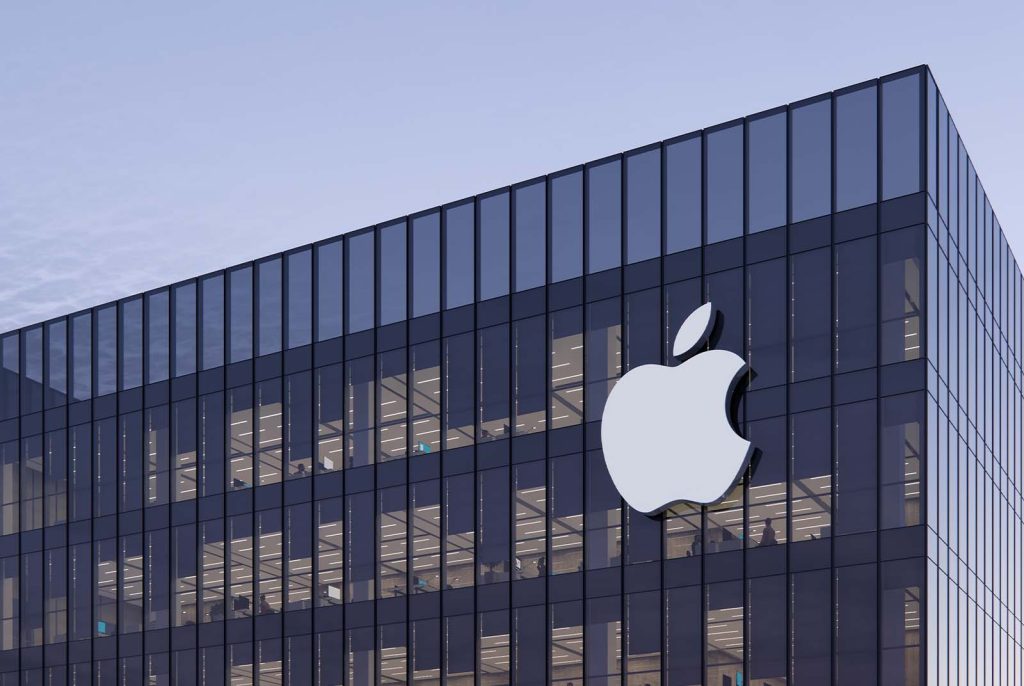Introduction
Apple Inc., one of the most influential and profitable technology companies in the world, has long been a leader in the consumer electronics and software industries. From the iPhone to the iPad, Apple has revolutionized the way people interact with technology. However, as the company matures and its core products approach market saturation, there are growing concerns about its ability to maintain its rapid growth trajectory. Recently, Apple’s performance has shown signs of a slowdown, particularly in key areas like iPhone sales, which have historically been the cornerstone of its revenue generation.
Given its track record of success, many are wondering: How should we interpret Apple’s recent slowdown in growth, and what does this mean for its future potential? This article delves into expert opinions and analyses surrounding Apple’s current position, the factors driving its growth slowdown, and the company’s long-term prospects. We’ll explore whether Apple can overcome these challenges and continue its legacy of innovation and profitability or if the company’s best days are behind it.
I. The Current State of Apple’s Performance
- Slower iPhone Sales and Revenue Growth Apple’s iPhone has been its most significant revenue generator for over a decade, contributing a large portion of the company’s total income. However, in recent quarters, iPhone sales have shown signs of slowing down, particularly in mature markets like the United States and Europe. This is due to several factors:
- Market Saturation: Most potential iPhone buyers already own one, especially in developed markets where smartphone penetration is near 100%. As a result, there are fewer new customers to acquire, and current customers are holding onto their devices for longer periods before upgrading.
- Economic Pressures: Global economic challenges, such as inflation, rising interest rates, and uncertain consumer spending, have made high-end smartphones less attractive to consumers. Apple’s premium pricing strategy may also limit its appeal in emerging markets, where the majority of new smartphone users are concentrated.
- Declining Growth in Key Product Categories Alongside the slowdown in iPhone sales, other product categories, such as the iPad, Mac, and Apple Watch, have not experienced the same rapid growth seen in previous years. Although these products continue to perform solidly, they are not driving the same level of revenue growth as the iPhone did in its heyday.
- iPad and Mac: While the iPad and Mac have seen a resurgence during the COVID-19 pandemic due to increased demand for remote work and learning, growth has slowed as the world returns to pre-pandemic conditions. These product lines face stiff competition from both traditional PC manufacturers (like Dell, HP, and Lenovo) and tablet manufacturers (such as Samsung and Microsoft).
- Apple Watch and Wearables: Apple’s wearables division, including the Apple Watch, AirPods, and other accessories, has been a bright spot, showing continued growth. However, the wearables market is becoming increasingly competitive, with numerous players offering similar products at lower prices.
- Services Segment: A New Growth Engine Amidst the slowdown in hardware sales, Apple has turned to its services segment as a crucial growth driver. This includes the App Store, iCloud storage, Apple Music, Apple TV+, Apple Pay, and Apple Care. The services business has been growing steadily, providing the company with a more predictable revenue stream and higher margins than hardware sales.
- Revenue Growth: Apple’s services business has consistently posted strong revenue growth, which has become an important part of its strategy to diversify away from hardware sales. In fact, services now account for a significant portion of Apple’s total revenue, helping to mitigate the impact of slower hardware sales.
- Expansion of Subscription Services: Apple is investing heavily in expanding its subscription-based services. For example, Apple TV+ has made significant strides with the release of original content and partnerships with major production houses. Similarly, Apple Music continues to grow its user base, even as it competes with other streaming services like Spotify and Amazon Music.
II. Experts’ Analysis of Apple’s Slowdown and Future Potential
- Challenges in Sustaining Growth Experts generally agree that the slowdown in Apple’s growth is a natural part of the company’s lifecycle. As one of the world’s largest companies, maintaining exponential growth becomes increasingly difficult. There are several reasons why analysts believe the growth slowdown is not necessarily a sign of decline but rather a phase in Apple’s evolution:
- Market Maturity: In many developed countries, Apple’s primary markets, the iPhone and other hardware categories, are reaching maturity. At this stage, the company can no longer rely on its previous growth patterns fueled by new customer acquisition. This forces Apple to look for alternative sources of growth, such as services and new innovations.
- Intense Competition: The tech industry is one of the most competitive, and Apple faces pressure from other established players like Samsung, Google, and Microsoft, as well as a growing number of challengers in the smartphone, wearables, and services markets. This increased competition has the potential to erode market share, especially if Apple fails to continue innovating or introducing compelling new products.
- Economic Pressures: As global economic conditions become more volatile, particularly in response to inflation and geopolitical tensions, consumers may become more conservative in their spending. This could result in a weaker demand for premium-priced products, including the iPhone, and affect Apple’s overall performance.
- The Transition to a Services-Oriented Model One of the main strategies experts highlight is Apple’s shift towards a services-oriented business model. The company has long been a hardware-centric business, but in recent years, it has worked hard to diversify and expand into services. This transition is considered crucial for maintaining growth over the long term.
- Predictable Revenue Streams: Services offer Apple more consistent and recurring revenue, unlike hardware sales, which can fluctuate based on product cycles and consumer demand. Subscription-based services, such as Apple Music, iCloud, and Apple TV+, provide a steady cash flow and help buffer against the ups and downs of hardware sales.
- Expanding Services Ecosystem: Experts believe that Apple’s ecosystem of devices, software, and services is one of its greatest strengths. The company’s ability to integrate its hardware with its software and services creates a seamless experience that is difficult for competitors to replicate. This “stickiness” of the Apple ecosystem is expected to remain a key driver of customer loyalty and service growth.
- Potential for New Services: Apple could further expand its services portfolio by exploring new areas such as healthcare (Apple Health and potential healthcare partnerships), fintech (Apple Pay, Apple Card), and augmented reality (AR and virtual reality (VR) services). These areas are expected to see substantial growth over the next decade, and Apple’s ability to leverage its existing ecosystem could give it a competitive edge.
- Innovation as the Key to Future Growth Apple’s future growth potential depends largely on its ability to continue innovating in key areas. Experts point to the company’s track record of launching groundbreaking products, from the iPod to the iPhone, and believe that the next wave of innovation could drive the next phase of growth.
- Augmented Reality (AR): Many experts believe that AR will be the next major technological frontier for Apple. The company has invested heavily in AR technology, and there is widespread speculation that Apple will launch an AR headset or glasses in the coming years. This could create a new market for Apple, similar to the iPhone’s disruption of the smartphone industry.
- Autonomous Vehicles: Apple’s rumored interest in the autonomous vehicle space (Project Titan) has generated significant buzz. While this market is still in its infancy, it represents a multi-trillion-dollar opportunity if Apple can successfully develop self-driving technology and enter the automotive industry.
- Health and Wellness: Apple has made considerable progress in the health and wellness space with the Apple Watch, which monitors heart rate, ECG, and other health metrics. As healthcare technology continues to advance, Apple has the potential to expand its product offerings and become a leader in the growing health tech market.
- Stock Performance and Market Perception From a stock market perspective, Apple’s performance has remained relatively strong despite the slowdown in growth. Analysts continue to rate the company highly, pointing to its massive cash reserves, brand loyalty, and ability to generate high margins. Apple’s stock has historically been seen as a relatively safe investment, with steady growth driven by its dominance in the tech space.
- Valuation Concerns: However, as Apple’s growth slows, there may be concerns about its valuation. Some analysts argue that the company’s stock price may be overvalued given the slower growth, and future price appreciation may be limited unless Apple can deliver a major breakthrough in product innovation or services.
- Dividends and Share Buybacks: Apple’s strong cash flow allows it to reward investors through dividends and share buybacks. This makes Apple an attractive option for income-focused investors, even if the company’s growth slows.

III. Conclusion: The Future of Apple’s Growth
While Apple’s growth has slowed in recent quarters, experts remain optimistic about its long-term prospects. The company’s ability to innovate, its growing services business, and its loyal customer base provide a solid foundation for continued success. However, the company will need to navigate increasing competition, economic pressures, and the challenge of maintaining innovation in an increasingly mature market.
Apple’s shift toward a services-driven model, combined with potential breakthroughs in areas like augmented reality, autonomous vehicles, and healthcare, positions the company well for the future. Although its growth trajectory may not be as steep as in its earlier years, Apple’s brand strength, technological leadership, and diversified revenue streams ensure that it remains one of the most powerful and influential companies in the world.
For investors and analysts, the key question is not whether Apple will grow, but how it will evolve in the next phase of its life cycle. Whether it can maintain its reputation as an industry leader will depend on its ability to continue innovating, leveraging its ecosystem, and expanding into new markets.
In conclusion, Apple’s future growth potential remains significant, but it will likely look very different from the explosive expansion seen in the past. The company’s future success will depend on its ability to adapt to a changing technological and economic landscape while staying true to its core strengths of design, user experience, and integration across devices and services.

















































